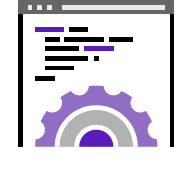Creating an exceptional user experience in Healthcare
The “Plain and Simple” Truth: It’s about the user

What makes an exceptional and usable user experience within the healthcare space? Is it simplicity, ease of use, a combination of both? When it comes to crafting a usable healthcare experience, what matters most is that it will get used by the intended audience with the least amount of trouble.
Here are five important elements of creating a highly usable user experience:
 1. Understand your audience: It’s so important to know your users – and not just their demographics and psychographics. Creating a healthcare experience requires empathy. You really have to know who they are on a deeper, fundamentally human level.
1. Understand your audience: It’s so important to know your users – and not just their demographics and psychographics. Creating a healthcare experience requires empathy. You really have to know who they are on a deeper, fundamentally human level.
• What do they value or care about, and what worries them?
• What are their digital and/or media habits?
• What does a day in their life look like as they travel through their healthcare journey?
• What actions do they need (and expect) to take, and what are their limitations?
• How do they feel when they engage with us, and how can we make that better?
 2. Make it intuitive: An intuitive experience is one that works as expected. Users don’t have to stop and think about it or wonder what to do – they can just find what they need or take the action they want without having to learn a completely new way to interact with your organization.
2. Make it intuitive: An intuitive experience is one that works as expected. Users don’t have to stop and think about it or wonder what to do – they can just find what they need or take the action they want without having to learn a completely new way to interact with your organization.
• For example, if you are creating an app that complements a surgeon’s digital tool, have you planned for what buttons, labels, and actions this surgeon is used to? How can the app become a natural extension of the tool vs. something new for the surgeon to learn?
• Perhaps you want to enhance a patient experience. What actions do your patients take today, and what are you trying to improve? How can you ensure the new tools and information are naturally findable and will enable patients to easily achieve every goal?
• Follow the principles of “Don’t Make Me Think.” An intuitive experience is one that does not require users to learn new ways of doing things or interacting with the experience.
 3. Focus on clarity: Defined as “the ability to be easily understood,” clarity ensures that your user will easily understand the information you are sharing or the tasks you are helping them complete.
3. Focus on clarity: Defined as “the ability to be easily understood,” clarity ensures that your user will easily understand the information you are sharing or the tasks you are helping them complete.
• For patients, clarity means avoiding jargon or technical language. Simply help them understand a product or service, in language that will make clear sense to them, so they can make a confident, informed decision.
• For healthcare providers, clarity means keeping things clear and precise, without over-explaining. Use language they understand, and support the experience with visuals and icons that enhance context.
 4. Design for accessibility: According to the World Health Organization: more than 2 billion people in the world live with some form of vision impairment; 1.5 billion people globally live with hearing loss; and 1.3 billion people experience significant disability.
4. Design for accessibility: According to the World Health Organization: more than 2 billion people in the world live with some form of vision impairment; 1.5 billion people globally live with hearing loss; and 1.3 billion people experience significant disability.
It’s imperative to keep these facts at the forefront of your mind when creating an inclusive healthcare experience, especially one designed for patients.
• Design with strong color contrast. Consider color blindness when selecting colors used for text and backgrounds, and avoid color combinations that make it hard for sight-impaired users to differentiate text from backgrounds. Include alt text for images that go beyond SEO.
• Give users the ability to navigate by keyword commands (without a mouse), and create large button touch spaces for users with limited motion.
• Write content with keen awareness that it may be conveyed through screen readers and/or closed captions. Keep the language clear and easy to understand.
• As a best practice, follow the accessibility guidelines developed by the World Accessibility Initiative.
 5. Make it seamless: Simply put, an experience should be designed from a holistic perspective, rather than focusing on one isolated interaction at a time. Creating a seamless experience requires thoughtful planning and execution.
5. Make it seamless: Simply put, an experience should be designed from a holistic perspective, rather than focusing on one isolated interaction at a time. Creating a seamless experience requires thoughtful planning and execution.
Look at how your users currently interact with your organization. Users might start their journey on your website or app, then come into your office for an appointment or demo. After that, they may get an email or see your post on social media.
• Are these interactions cohesive and clearly provided by a single organization? Is there any chance users could feel like they are interacting with one organization online and a different organization in real life?
• Every user interaction should feel like a natural extension of the one they took before. How can you ensure that anything you add, enhance or modify will minimize friction and help users move effortlessly from one channel or interaction to the next?
Looking to enhance your user experience? Check out our services to discover how we can help you plan, shape and polish your healthcare experience today.